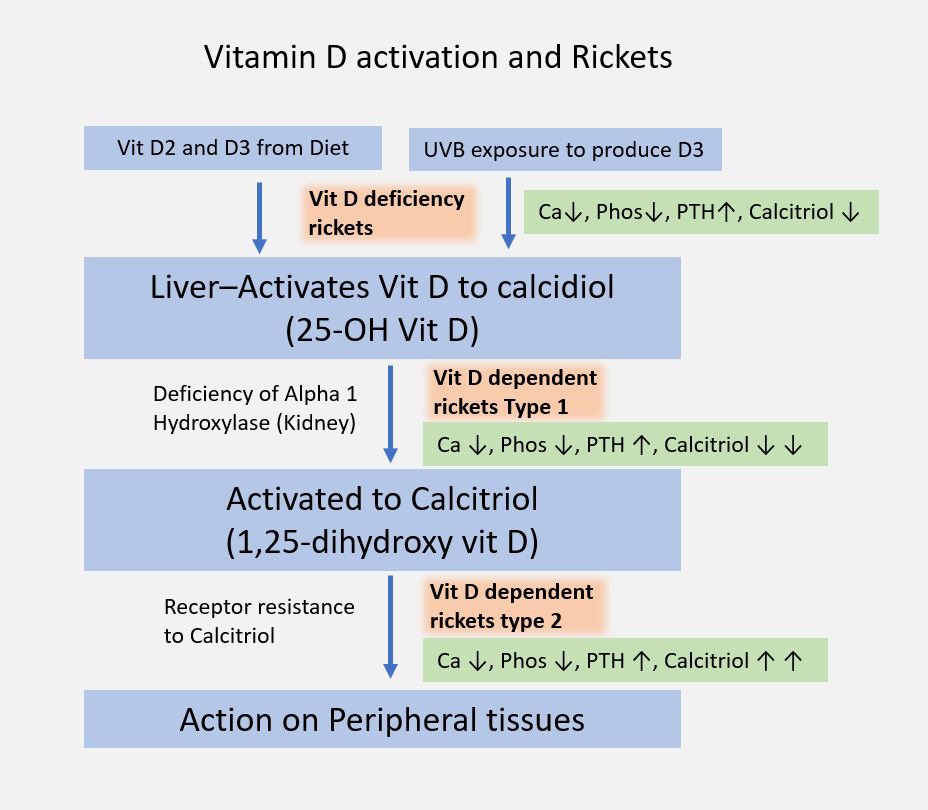Types Type Pathology 25(OH) D 1,25(OH)2 D PTH Ca PO4 ALP Additional clinical findings Treatment Vitamin D deficiency (Nutritional) Hypovitaminosis D 🡢 Hypocalcemia 🡢 Secondary hyperparathyroidism 🡢 Rise of serum calcium towards normal level ↓ ↓ ↑ ↓/= ↓ ↑ Rachitic rosaryBowing of kneesMuscle hypotoniaWaddling gaitDental diseaseLooser zones/Milkman’s fracture (pseudofracture…
Tag: Pediatrics
Section Editor: Dr. Sujit Kumar Shrestha, MD Pediatrics, Fellowship Neonatology

Child with a limp : Mnemonic Approach
HISTORY AND EXAMINATION Mnemonic: LIMPINGS 1. Limping definition and onset Any deviation in walking pattern away from the expected normal pattern for the child’s age Limping is never normal Acute Acute infections Trauma Leukemia Unstable SCFE Epidural abscess Chronic SCFE DDH Neoplasm Child abuse Neuromuscular conditions Leukemia 2. Injury Mnemonic:…
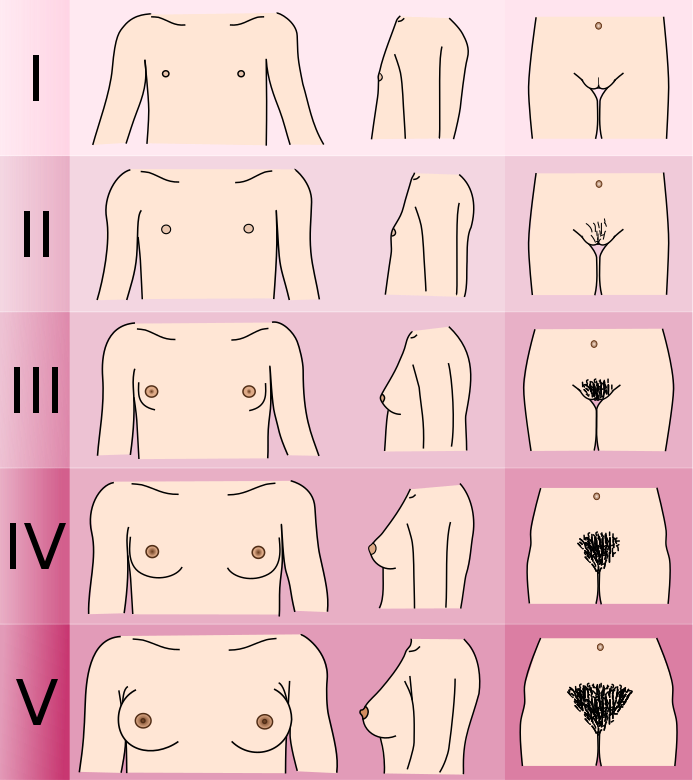
Tanner stages : Simplified with Mnemonics
Breast Development Mnemonic: ABCDE Stage 1 – Absent development Stage 2 – Breast bud Stage 3 – Common Contour (not separated) Stage 4 – Double mound (contour separated) Stage 5 – End stage development (Adult type) Male Genitalia Development Mnemonic: ABCDE Stage 1 – Absent development Stage 2 – Bulky…
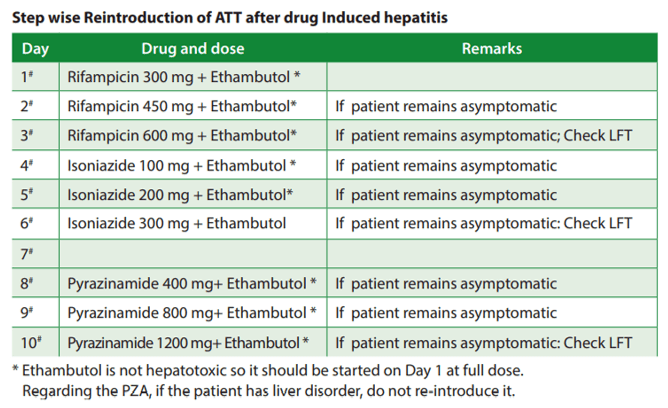
Management of Anti-tubercular therapy (ATT) induced Hepatitis
Definition of ATT induced hepatitis ALT > 3 X Normal + Symptoms OR ALT > 5 X Normal without Symptoms Management of ATT induced hepatitis 1. Hold all TB drugs for 7-10 days. Wait before restarting ATT until: Symptoms: Resolve ALT <2.5 X Normal For severe TB, patients should be…
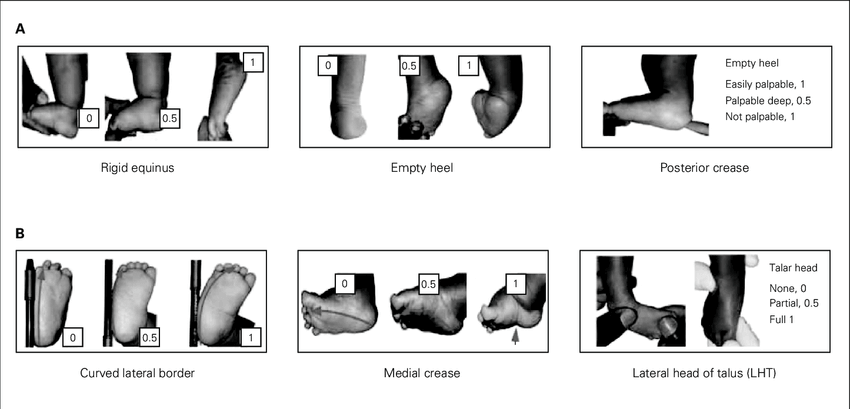
Pirani Score and Dimeglio Classification for Clubfoot Assessment
Pirani socre Pirani score for assessment of clubfoot (CTEV) consists of 6 parameters (3 each in midfoot and hindfoot) which is scored as 0, 0.5 or 1 with a maximum possible score of 6. The parameters can be remembered using the mnemonic: PER TOM Posterior crease Empty heel Rigid equinus…
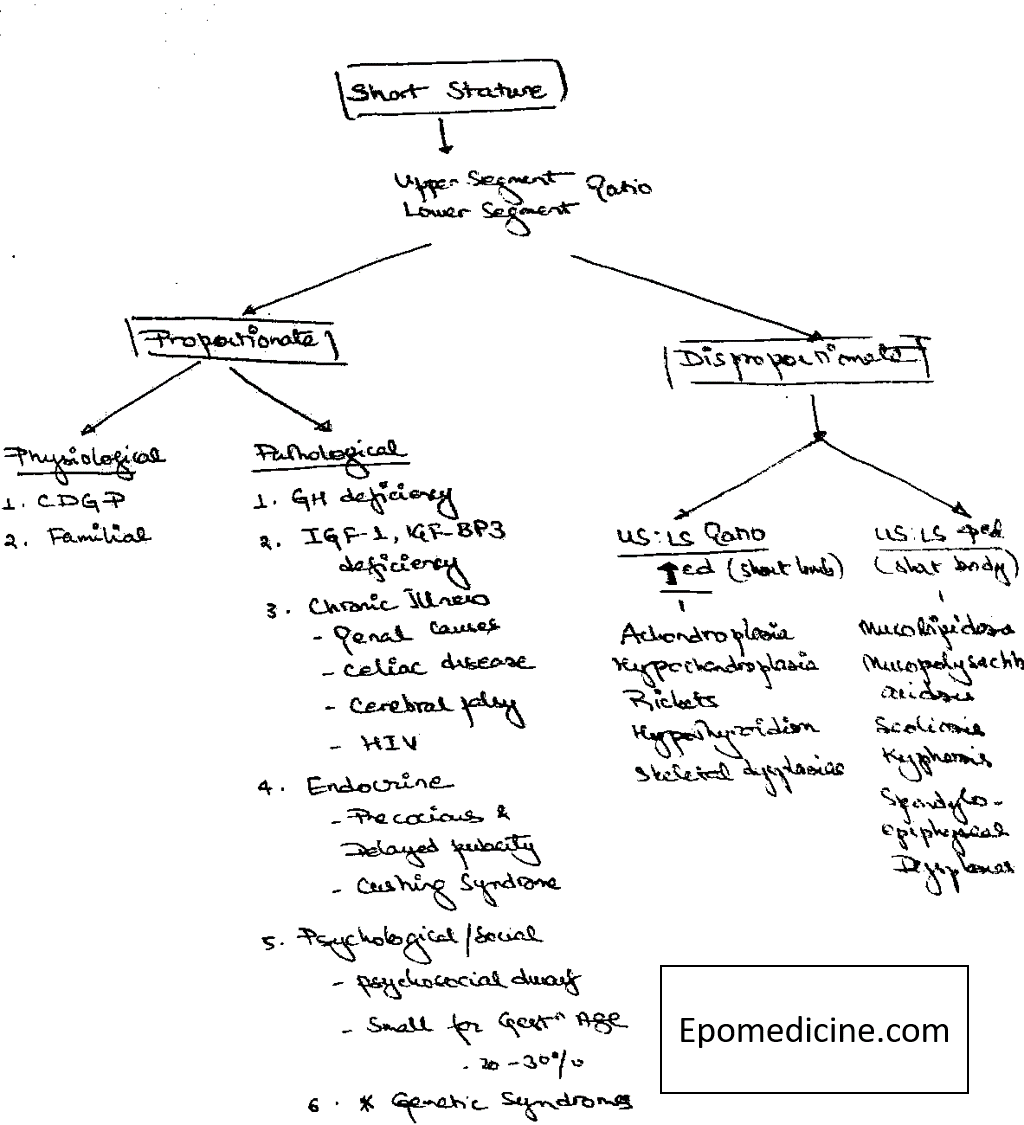
Approach to a Child with Short Stature
Definition of Short Stature Short stature refers to the height below 3rd Centile or 2 Standard Deviations (-2 SD) or more below the mean height for chronological age and gender for the standard population. When height is >-3 SD it’s most likely pathological. Assessment of Short stature 1. Accurate height…

Atropine Induced Paradoxical Bradycardia
Atropine induced paradoxical bradycardia is the sinus bradyarrhythmia following low-dose atropine resulting from the paradoxical slowing in the sinoatrial (SA) node discharge rate. Mechanism of Atropine Induced Paradoxical Bradycardia Central vagotonic effect (blocking M1 acetylcholine receptors in parasympathetic ganglion controlling SA node) of atropine which, at higher doses, is masked…
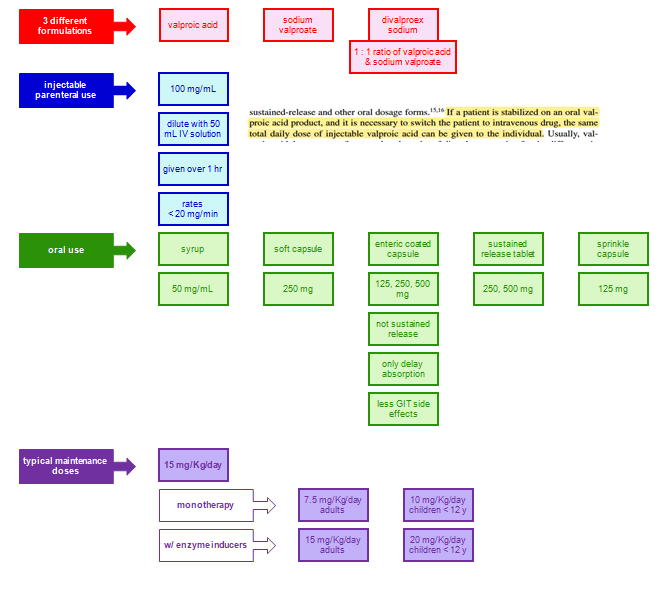
Valproic acid (Valproate) : Pharmacology
Dosage and Absorption VPA is absorbed through the small intestine, and delayed- and extended-release forms are designed to extend the dosage interval and bypass the stomach to reduce dyspepsia. The liquid and tablet forms have a more than 10-fold higher absorption rate constant than the extended-release forms and peak at…
